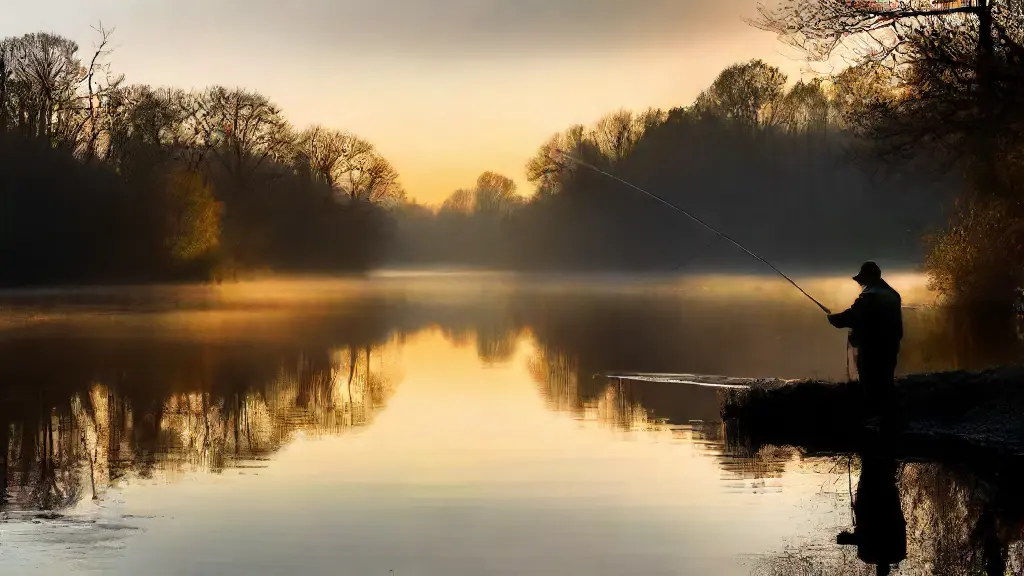Using Inline Spinners for Smallmouth Bass

As the sun rises over the tranquil waters, the thrill of the hunt begins for many an angler. Smallmouth bass are notoriously finicky, requiring a precise combination of presentation and location to entice a bite.
Inline spinners are particularly effective in targeting smallmouth bass due to their enticing presentation.
By presenting the spinner in strategic locations, anglers can increase their chances of success.
Wary of ambush predators, smallmouth bass congregate around structural elements like boulders, weed beds, and sunken logs to stage and ambush prey.
When crafting an effective presentation, consider the habits of smallmouth bass. By analyzing their feeding behaviors and habits, anglers can develop a deeper understanding of their preferences and increase their catch rates, particularly for bass, by using spinners and other effective fishing methods.
Using Inline Spinners for Smallmouth Bass
Casting a line into the crystal-clear waters of a summer morning, there’s a thrill that comes with the promise of reeling in a prized catch.
Key Principles for Effective Smallmouth Bass Fishing.
When it comes to targeting these feisty fish, it’s essential to understand the principles of effective smallmouth bass fishing. This includes being aware of the tackle needed for the job, such as light to medium action rods and reels, and gear like fluorocarbon line and soft plastic lures.
With a focus on freshwater habitats and developing a keen understanding of the habits of these formidable opponents, you can increase your chances of landing a prized catch.

Why Use Spinners for Bass Fishing
Freshwater fishing, particularly smallmouth bass fishing, requires a deep understanding of the species’ behavior and habitat. On the lookout for an edge that sets them apart from the rest, enthusiasts often turn to inline spinners, a valuable option that offers a unique presentation the species finds irresistible.
Smallmouth bass fishing is a highly competitive sport that demands effective lures to attract the species.
Inline spinners have proven to be a valuable option in this regard, offering a unique presentation that smallmouth bass find irresistible.
What makes inline spinners so effective?
Inline spinners work by creating a tantalizing vibration and flash that attracts smallmouth bass from a distance.
This is because the species is drawn to movement and change in their surroundings, which the spinner provides through its spinning.
Effective Lure Options for Smallmouth Bass Fishing
- Smallmouth bass are attracted to movement and change in their surroundings.
- Inline spinners create a tantalizing vibration and flash that attracts smallmouth bass from a distance.
- Smallmouth bass find the unique presentation of inline spinners irresistible, making them a valuable option in competitive fishing.
- Effective lures, such as inline spinners, are crucial in smallmouth bass fishing to attract the species and increase chances of catching them.
What are Smallmouth Bass Favorite Lures
As you dip your line into the clear waters of a pristine lake or river, it’s essential to understand the subtle nuances of smallmouth bass behavior to increase your chances of landing a monster catch.
Defining the Perfect Lure
————————-
To determine what lures smallmouth bass prefer, you need to consider their feeding habits and natural prey.
Rattles and Movement
——————–
When it comes to smallmouth bass lures, rattles and movement play a crucial role in attracting these fish, often triggering their curiosity and aggression.
Shape and Profile
——————
Minnow imitation and baitfish profiles are two of the most effective shapes to imitate when targeting smallmouth bass, as they closely mimic the fish’s natural food sources. trolling pattern that optimizes your chances of catching a fish.
How to Choose the Right Spinner
As you step into the world of smallmouth bass fishing, you can’t help but feel the thrill of the hunt. The perfect lure is the key to reeling in a big catch, and spinning lures are a popular choice.
But what happens when faced with the daunting task of choosing the right one? With so many options out there, it’s no wonder many anglers feel overwhelmed.
Choosing the Right Spinner: Key Considerations
When it comes to choosing the right spinner, there are several key considerations to keep in mind.
First and foremost, the weight and size of the spinner are crucial factors that impact distance, speed, and overall performance. A heavier spinner will typically cast far and be more effective in strong currents, but may be more difficult to handle for beginners. On the other hand, a lighter spinner is better suited for casting small lures and bait.
| Spinner Weight | Spinner Size | Pros | Cons |
|---|---|---|---|
| Heavier | Large | Casts far, effective in strong currents | Difficult to handle for beginners |
| Lighter | Small | Better suited for casting small lures and bait | Less effective in strong currents |
Can Spinners Handle Freshwater Currents
As I strolled along the waterfront, I couldn’t help but ponder the mystery of fresh water flows. Since smallmouth bass are notoriously finicky creatures, and presenting the right lure in the right way is crucial to landing them.
I.
Understanding Freshwater Currents
Freshwater currents have a profound impact on fishing, making it essential to comprehend their intricacies.
II.
How Spinners Interact with Currents
When a spinner moves through the water column, it’s influenced by the current, which affects its movement and action.
III.
Tips for Using Inline Spinners in Freshwater Currents
To increase effectiveness, it’s crucial to adjust the spinner retrieve to match current conditions, use the right line and leader, and experiment with different retrieve speeds to account for the river bank’s unique flow.
What are Submerged Structures for Bass
Fishing in the right spots can make all the difference in catching bass, and one often-overlooked yet crucial factor is the presence of submerged rocks and hidden formations that provide a unique environment for these fish to thrive.
Types of Submerged Structures
-
Rock Piles.
-
Log Jams.
-
Drop-Offs.
-
Channel Sweeps.
Bass are drawn to these underwater formations because they offer a sense of security, allowing them to hide in plain sight and pounce on unsuspecting prey while avoiding predators. Because bass often find food and shelter among submerged structures like rocks and hidden holes, which can provide them with a competitive advantage.
Facts About Bass Fishing
- Bass are attracted to submerged structures because they provide a sense of security, allowing them to hide and pounce on prey while avoiding predators.
- Bass often find food and shelter among submerged structures, which can provide them with a competitive advantage.
- Submerged rocks and hidden formations can provide a unique environment for bass to thrive.
- Fishing in the right spots, including areas with submerged structures, can make a significant difference in catching bass.
Why Use Shorelines for Bass Fishing
As anglers, we often overlook the humble shoreline, mistakenly assuming it’s a barren wasteland devoid of bass. In reality, shorelines offer a treasure trove of structure, providing a unique combination of features that can make or break a fishing trip.
Watercraft navigating the open water often miss the subtle changes in depth, temperature, and vegetation that create a maze of hiding spots and ambush points along shorelines, leaving smallmouth bass to thrive in these areas.
Understanding the structure and behavior of bass near shorelines is crucial for a successful fishing trip.
Smallmouth bass are particularly fond of shorelines, drawn to the rocks, weeds, and submerged logs that provide the perfect hiding spots, while the gentle slope of the shoreline allows them to move undetected. determine the structure, watercraft, and boat traffic that utilize shorelines.
How to Troll with Inline Spinners
As the sun rises over the calm waters, the prospect of reeling in a prized catch is almost too thrilling to bear. Experienced anglers know that the key to success lies in mastering the subtleties of lure presentation, and inline spinners are a favorite among many.
For those new to the world of trolling, the task may seem daunting, but with the right guidance, even the most novice angler can develop the skills needed to land a trophy.
What is the ideal speed for trolling with inline spinners? The answer lies in understanding the behavior of smallmouth bass and how they react to different speeds.
By adjusting your speed to match the natural movement of the lure, you can increase your chances of enticing a strike. Stay tuned for more insights on how to effectively troll with a fishing boat, beginner, expert, guides.
Trolling with Inline Spinners
- The ideal speed for trolling with inline spinners is between 5 to 5 miles per hour, as this allows the lure to move naturally and mimic the action of a baitfish.
- Smallmouth bass are more likely to strike a lure that is moving at a speed that matches the natural movement of the water, such as 5 to 5 miles per hour in calm waters.
- Using a slow and steady retrieve can help to increase the chances of enticing a strike, as this allows the lure to move naturally and give the bass time to react.
- Experimenting with different speeds and retrieves can help to determine what works best for a specific location and type of fish, as each body of water and species of fish can have its own unique characteristics.
Punching with Heavy Weights for Bass in Thick Cover
Wacky Rigging for River Bass


